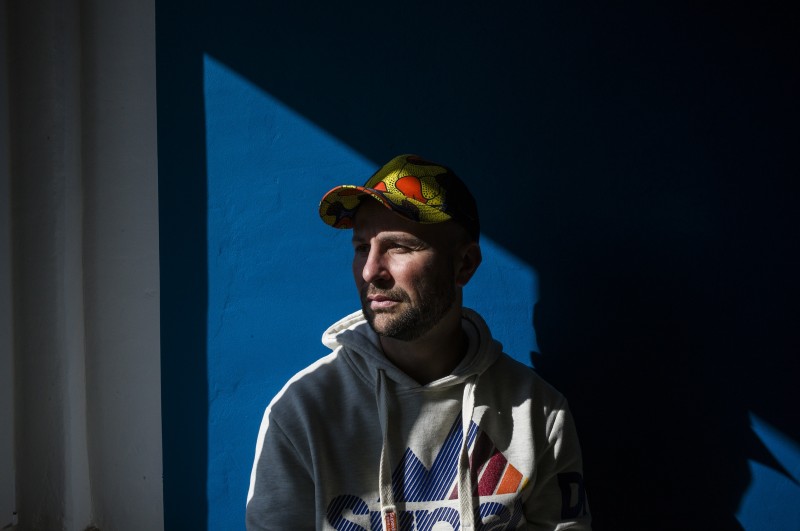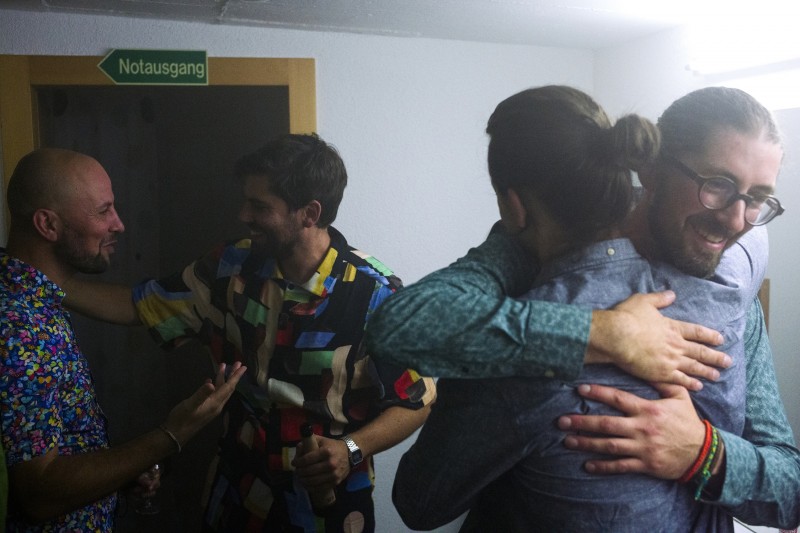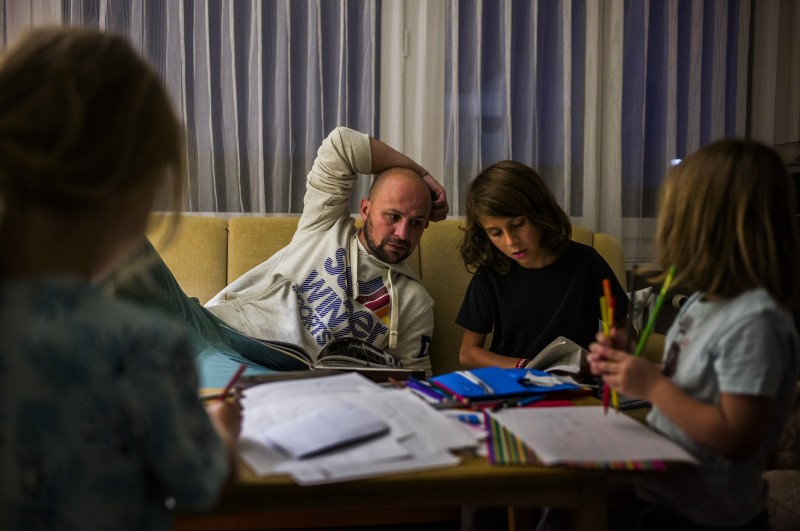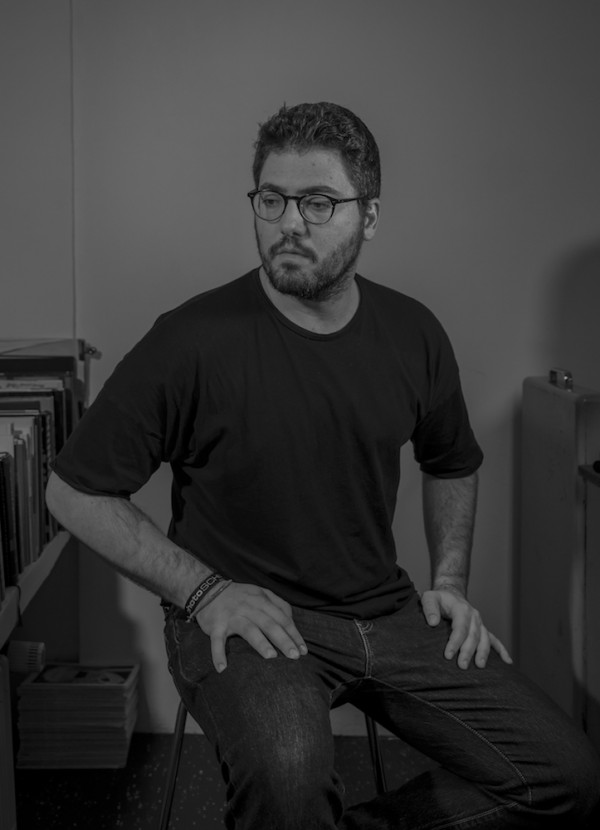A question of trust
A question of trust
Dominic Nahr
January 26, 2024

Dominic Nahr accompanied 41-year-old migrant Hafid with the camera
Of course, in the past it was already possible to manipulate or falsify photos, but it was never as easy to do and difficult to prove, as today. This does not mean that there is always a bad intention behind every manipulation; in the artistic field, the transition from heavy editing to manipulation is very fluid. However, in the case of reportage – and especially when the pictures are documenting current news events – they should not be falsified.
From the technical perspective. To start with, the camera needs additional hardware in the form of a crypto chip, which can store certificates in a separate, encrypted storage space that can not be seen from the outside. Such chips and storage spaces are not found in regular cameras. Leica applies to the D-Trust GmbH, a subsidiary of the German Federal Printing Office, requesting a certificate for each M11-P, which it then stores in the camera. This means that an extra step is necessary for the production of the M11-P compared to the normal M11.
The camera provides each image with a signature that can be verified by the certificate, and cannot be changed at a later point. In addition to the usual metadata, this signature contains author information and a greatly reduced original version of the image. If the picture is further processed, all the changes are added to the signature in the form of a textual description. With special tools, or through websites such as Content Credentials for example, anyone who receives a picture as a data file can check its signature, and thus the authenticity of the image. Furthermore, they can compare the picture with its reduced, original version, making it easy to see if the image has been manipulated.
Recognising manipulations. Editing a picture is not prevented in any way, but the process is clearly documented. Images can continue to be cut, sharpened, colour-corrected, reduced in resolution, store in other data formats, and changed in many other ways. As long as all the programmes applied conform to CAI rules, the signature remains in place.
Even photo montages – which could already be considered manipulations – are possible, and do not lead to the signature being erased, as some people believe. Instead, the manipulation is immediately apparent when viewing the documentation of the image and comparing it with the original. This means that anyone checking a CAI signature has a particular responsibility, because it is not simply a sudden moment of inspiration indicating a forgery, it is necessary to take a very close and careful look. Furthermore, the CAI signature can only be verified by a person with access to the image as a file, and who is checking the image using special software tools or websites such as Content Credentials.
Limits and possibilities. Of course, CAI is still in its early stages, and the Leica M11-P is the only camera currently able to produce pictures with the necessary certificate. In addition, contrary to what many may have hoped, CAI support cannot be retrofitted to existing cameras by means of a firmware update, because they lack the crypto chip and, consequently, the encrypted memory space for the certificate. Leica will surely be paying attention to CAI-compliant designs in the future, especially with their higher-end cameras, but the M11-P is the only one in the Leica portfolio at this time. While there are other camera manufacturers that support CAI, it is not all of them; and it will probably be many years before CAI signatures created inside a camera are the norm rather than the exception.
At the time of writing, Adobe is still the only software developer whose picture-processing programmes support CAI. Even in Photoshop and Lightroom, CAI support is still defined as in the Beta phase, and must be activated before the first image files are imported, to ensure that the signature is not lost irretrievably. Furthermore, not all editing tools leave their mark on the protocol as yet; however, this limitation is not due to a lack of will, but simply to the fact that development is still ongoing. In this case, too, the difficulty of creating a CAI-compliant processing chain will hopefully one day be reversed, and become a matter of course.
Summary. At this time, Content Authenticity Initiative (CAI) is more of a promise that an actual reality; but this will probably change significantly. The technical application of CAI is also not written in stone, but is evolving constantly. In other words, it is being revised and supplemented, which is essential for safety-relevant technologies in order to make them secure for the future. Contrary to what is often assumed, the aim of CAI is not to prevent manipulation, but to ensure transparency, especially as it would not be easy to draw a clear line between picture-processing and manipulation. In other words, CAI is about trust in the truth behind pictures, and not about absolute precepts or prohibitions regarding their processing.
Dominic Nahr+-
Dominic Nahr was born in 1983 in Heiden, Switzerland, but grew up in Hong Kong. He lived and worked in many countries, including Kenya where he worked as a contract photographer for TIME magazine. At the end of 2017, he moved to Switzerland. Today he lives and works in Zurich. Nahr is a freelance photographer, and has been the recipient of numerous awards, including the first Leica Oskar Barnack Newcomer Award and a World Press Photo Award. His photographs have appeared in The New Yorker, National Geographic, GEO, Der Spiegel, NZZ and many more. Nahr has a weekly photo column in the Swiss magazine Republik. More

Dominic Nahr accompanied 41-year-old migrant Hafid with the camera

Hafid is a singer-songwriter for the band Šuma Čovjek

He has been working for over ten years in Switzerland, as an NGO co-programme coordinator for Mozambique, Zimbabwe and South Africa

For Hafid it is important to be there for his children. Here he has just come from picking up his daughter from football training

Nahr accompanies Hafid and the children to their grandmother's apartment – a place where the family can spend time without digital distractions, the Algerian-born man emphasizes
